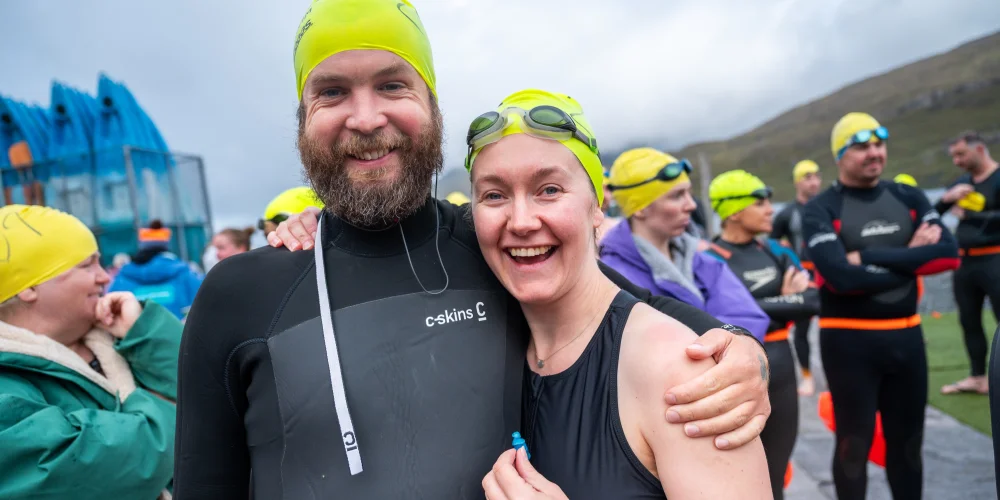The Gaelforce Great Swim Trilogy now includes both wetsuit and skins categories across all distances. With this in place, it is useful to outline the practical differences between the two styles of open-water swimming. These points are provided simply to help swimmers understand how each option changes the feel and rhythm of the water.
How a wetsuit affects swimming
A wetsuit provides insulation by holding a very thin layer of water next to the skin. This water warms naturally and helps maintain comfort during longer periods in cold water. Wetsuits also increase lift which can support body position. Many swimmers notice that their legs sit slightly higher which can reduce drag and assist with rhythm. This effect is especially noticeable in freshwater where natural buoyancy is lower than in sea water.
How skins swimming feels different
Skins swimming means swimming without neoprene. Without the lift of a wetsuit, the swimmer relies entirely on natural body position and technique. Many swimmers find that they have a clearer sense of the water and of their own balance. Movements feel unrestricted and feedback from the water is immediate. This creates a very different style of swimming that some swimmers prefer for the clarity and directness it provides.
How these differences appear in the Trilogy courses
The three swims in the Trilogy each have their own character and the differences between wetsuit and skins swimming can be noticed in distinct ways.
- Great River Swim in May is current assisted. Both styles move quickly with the flow, though the sensation can feel different. Wetsuits may glide a little more on the surface while skins swimmers often report a stronger perception of the current.
- Great Lake Swim in July takes place in freshwater which provides less natural lift than sea water. Wetsuit swimmers may feel more support while skins swimmers experience a clearer sense of body balance in the water.
- Great Fjord Swim in September is known for colder and deeper water. The temperature difference is noticeable between the two styles. Wetsuits reduce heat loss, while skins swimmers experience the direct temperature of the water throughout the swim.
Changes to technique and movement
In a wetsuit, arm recovery can feel slightly different because the material adds resistance at the shoulders. Kick timing can also change because the legs float higher. Skins swimmers feel their natural technique without these effects. This can make the stroke feel smoother or more familiar, especially for those who have trained extensively without neoprene.
Pacing and energy use
The lift provided by a wetsuit can reduce effort at similar paces because the swimmer sits higher in the water. Skins swimmers create more surface contact which changes drag and can influence pacing. Neither is inherently better or worse, only different in how they interact with the water and with the individual swimmer.
A simple summary of the differences
- Wetsuits provide insulation and lift which can support body position.
- Skins swimming allows direct contact with the water and unrestricted movement.
- Freshwater in the lake reduces natural lift which makes wetsuit buoyancy more noticeable.
- The river flow interacts differently with each style, creating distinct sensations of movement.
- The fjord temperature is felt differently depending on the presence or absence of neoprene.
- Technique feels slightly different in each style due to changes in lift, rotation and feedback from the water.
Final note
The aim of offering both wetsuit and skins options in the Gaelforce Great Swim Trilogy is to acknowledge these differences and to allow swimmers to choose the style that suits how they like to experience the water. Each way of swimming brings its own qualities and both contribute to the variety and character of the Trilogy


